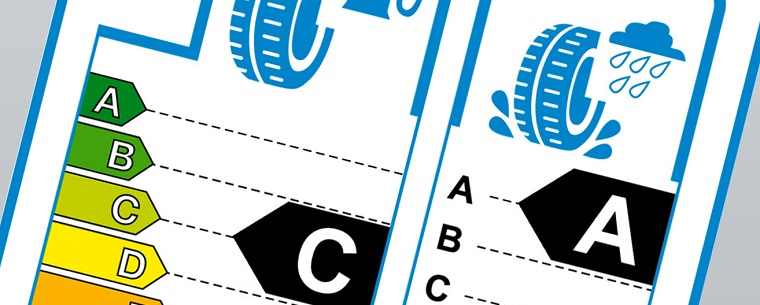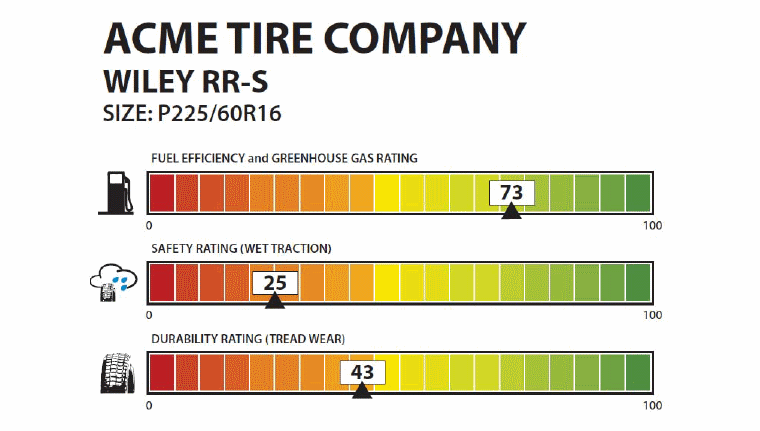Does Brexit mean the end of the EU tyre label in the UK?
Kwik Fit | Wednesday 8th March 2017 8:45am

Since the UK voted to leave the EU last summer there has been a lot of speculation as to what will happen once EU legislation is no longer imposed. In the tyre industry the most obvious change could be right in front of our eyes as every new tyre sold in the UK today must include an EU tyre label – a sticker on the side of the tread that displays the performance rating of the tyre, much in the same way that white goods display their energy rating.
The EU Commission requires all tyre manufacturers to comply with the tyre labelling regulations when selling tyres in the EU zone. The tyre label itself grades tyres based on 3 factors:
- Fuel Efficiency: The rolling resistance of the tyre is measured to determine the energy required to keep the tyre rolling. Tyres with a low rolling resistance are more fuel efficient. Choosing tyres with a high fuel efficiency rating will produce fewer CO2 emissions and give you more miles on a tank of fuel.
- Wet Grip: Wet grip rates a tyre's ability to brake on wet surfaces. Tyres with a high wet grip rating will come to a stop in a shorter distance when the full brakes are applied. The dry braking capability is not measured.
- Noise: In a bid to cut road noise, tyres are measured for external noise emissions in decibels. It’s important to note that internal cabin noise is not measured.
So once the UK leaves the EU, will we see the EU tyre label disappear altogether from tyre racks? It’s highly doubtful. While the information provided on the EU tyre label is fairly limited in scope and only measures 3 key performance factors, adoption of similar labelling systems in other countries across the world is helping consumers to make a more informed choice when buying tyres. Therefore, it’s unlikely that the label will be completely withdrawn in the UK.

The Swiss solution
As a non-EU country land-locked by EU member states, Switzerland is potentially the model for what tyre labelling might look like in a post-Brexit UK. Although there were no regulations that required it, the EU tyre label naturally found its way on to the majority of tyres sold in Switzerland when the legislation came into effect in 2012. However, in 2014, having seen the benefits the tyre label provided to consumers, the Swiss Federal Office of Energy created its own energy label for tyres which became mandatory that same year. The Swiss label is based heavily on the EU energy label and rates tyres on the same three categories of fuel efficiency, wet grip and noise, but shows the importance placed on providing tyre buyers with additional information even in countries not governed by EU law.
Differences around the world
Switzerland isn’t the only country outside of the EU to adopt a tyre labelling system to provide information about a tyre’s strength and weaknesses.
Tyre labels in the USA:
In America, Uniform Tyre Quality Grading or UTQG has been enforced since 1979 and rates tyres on treadwear, traction and temperature. All tyres manufactured for sale in the US must display this rating but unlike the EU tyre label, the UTQG rating is physically molded into the tyre sidewall. The rating allows consumers to understand how long they can expect their tread to last, the tyre’s ability to stop on wet roads (much like the wet grip category on the EU tyre label) and the tyre’s resistance to heat build-up at speed.

More recently in 2010 the USA proposed the adoption of a new tyre label similar to the EU tyre label which measures the fuel efficiency, wet traction and tread durability of the tyre on a scale of 1-100. However, it is not yet mandatory to display this label.

Tyre labels in Japan:
In 2010, Japan began a voluntary program to rate the rolling resistance and wet grip of tyres. The Japanese model drops the colour coding found in the EU label but still rates tyres on an alphabetical style – from ‘AAA’ to ‘C’ for rolling resistance and from ‘a’ to ‘d’ for wet grip. Tyres achieving a rating of A or above for fuel efficiency can also display the ‘Fuel Efficient Tyre’ logo – a green globe on wheels.

Tyre labels in South Korea:
In 2011, South Korea adopted a tyre labelling system similar to Japan which rates the same criteria of fuel efficiency and wet grip. However, while the Japanese label is still voluntary, South Korea made it mandatory in 2012 for all tyres sold to feature an information label. Both categories are rated from 1-5, with 1 being the best rating possible. The label also features colour coding similar to that found on the EU tyre label.

Leaving the EU won’t change the fact that there is mounting pressure on companies and individuals to cut their energy usage and carbon emissions. Tyre labels give consumers an insight into how energy efficient their tyres are and wider adoption and enforcement of tyre labelling worldwide is likely in the coming years. Of course, this is just speculation, but don’t expect tyre labels to disappear in the UK once Article 50 is triggered.
If you have any questions about tyre labels or writing on your tyres, get in touch with Kwik Fit's team of experts near you.
Any facts, figures and prices shown in our blog articles are correct at time of publication.
Featured Articles
Is it Illegal to Drive With One Headlight?
Saturday 19th July 2025
Wondering if it’s illegal to drive with one headlight? Learn about the safety risks and penalties of illegal blown bulbs and why you should fix them promptly.
Air Con in EVs & Hybrids: Experts Answer Your Questions
Monday 30th June 2025
Does air con drain EV batteries? Can you use the air con while charging an electric car? Find out the answers to these questions & more from Kwik Fit’s experts.
Why Is Your Car Making a Noise? Fixes & Tips
Friday 13th June 2025
When your car starts making unexpected noises, it can certainly be quite disconcerting; it may be nothing to worry about, but here’s what you need to know.









